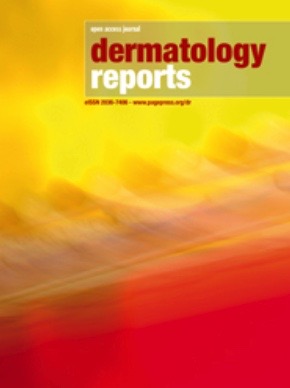Project Overview and Alignment with Sustainable Development Goals
A cross-disciplinary research team from Washington University has secured a five-year, $3.6 million grant from the National Science Foundation (NSF) to investigate the human health impacts of recurrent, low-level flooding. The project will focus on communities in the Mississippi Delta and the St. Louis Metro East region, aiming to create a comprehensive dataset linking flood events to pathogen exposure and infection risk. This research directly supports several United Nations Sustainable Development Goals (SDGs) by addressing the interconnected challenges of health, water quality, community resilience, and climate change.
- SDG 3: Good Health and Well-being: By examining the links between contaminated floodwater and disease, the project seeks to reduce illness from water-borne pathogens.
- SDG 6: Clean Water and Sanitation: The research directly investigates the consequences of inadequate sanitation infrastructure, where flooding causes sewage backups, compromising water safety.
- SDG 11: Sustainable Cities and Communities: The project aims to make communities more resilient to climate-related hazards by developing tools to predict and mitigate flood risks.
- SDG 13: Climate Action: The study acknowledges the role of climate change in exacerbating storm and flood intensity, contributing to adaptive strategies for vulnerable populations.
- SDG 17: Partnerships for the Goals: The initiative is founded on a multi-disciplinary partnership across anthropology, biology, engineering, earth sciences, and data science to achieve its objectives.
Research Objectives and Methodology
Addressing SDG 3 (Good Health and Well-being) and SDG 6 (Clean Water and Sanitation)
The primary objective is to quantify the health risks associated with nuisance flooding, which results in sewage contamination of homes and public spaces. The research team will analyze how exposure to contaminated floodwater and potentially unsafe tap water affects human health, particularly gut microbiome composition and the prevalence of infection. Preliminary data from the Cahokia Heights community has already revealed the presence of parasitic and bacterial pathogens, such as H. pylori, and high levels of intestinal inflammation among residents.
- Conduct geospatial analysis to map flood frequency and severity.
- Collect and analyze soil, water, and biological samples to identify pathogen levels and types.
- Examine the correlation between flood exposure, gut microbiome changes, and documented health issues.
- Assess tap water systems for microbial contaminants that may pose health risks.
Enhancing SDG 11 (Sustainable Cities and Communities) and SDG 13 (Climate Action)
The project moves beyond reactive responses to major disasters by focusing on the chronic stress of recurrent flooding, a problem intensified by climate change. By developing predictive models, the team will provide critical tools for urban planning and infrastructure improvement, thereby strengthening community resilience. The research employs a community-engaged approach to identify specific households and neighborhoods most vulnerable to flooding and contamination, ensuring that mitigation strategies are targeted and effective.
- Develop advanced statistical models to predict future flooding hazards based on rainfall and climate data.
- Create an interactive risk map to help communities assess vulnerabilities and evaluate potential infrastructure upgrades.
- Monitor flooding on a block-by-block basis to understand its pervasive nature and impact on daily life.
Expected Outcomes and Broader Impact
Empowering Communities and Fostering Partnerships (SDG 17)
The NSF grant will enable the research team to translate its complex scientific data into actionable tools for community leaders, policymakers, and residents. The project is designed to empower lower-resource communities with the evidence needed to advocate for infrastructure investment and public health interventions. This collaborative approach, combining academic expertise with community knowledge, is essential for developing sustainable solutions.
- Creation of a detailed, publicly accessible database integrating environmental, health, and geospatial data.
- Development of training workshops and citizen science initiatives to build local capacity for monitoring and advocacy.
- Dissemination of predictive tools to help manage flood-related health hazards in at-risk communities nationwide.
Analysis of Sustainable Development Goals in the Article
1. Which SDGs are addressed or connected to the issues highlighted in the article?
- SDG 3: Good Health and Well-being: The article’s primary focus is on studying the “human health effects of flooding,” including the risk of parasitic and bacterial infections, high levels of intestinal inflammation, and the impact on the gut microbiome.
- SDG 6: Clean Water and Sanitation: The research directly addresses issues of water quality and sanitation, as flooding causes “sewage to back up into residents’ homes” and researchers are “examining which germs might be lurking in residents’ tap water.”
- SDG 11: Sustainable Cities and Communities: The project centers on the impact of “nuisance flooding” on communities like Cahokia Heights, aiming to create risk maps, assess vulnerabilities, and estimate the benefits of infrastructure upgrades to make these communities more resilient.
- SDG 13: Climate Action: The article explicitly links the increasing frequency and severity of flooding to climate change, stating that “it’s going to continue with climate change, making storms and flooding worse across the U.S. in the coming years.” The research aims to help communities adapt to these climate-related hazards.
- SDG 17: Partnerships for the Goals: The entire initiative is a partnership, described as a “cross-disciplinary team of WashU researchers” from five different departments, funded by a significant grant from the National Science Foundation (NSF) to address a complex social and environmental problem.
2. What specific targets under those SDGs can be identified based on the article’s content?
- Target 3.3: By 2030, end the epidemics of AIDS, tuberculosis, malaria and neglected tropical diseases and combat hepatitis, water-borne diseases and other communicable diseases. The research directly addresses this by examining the links between flooding, pathogen levels, and infection risk from water-borne communicable diseases, as evidenced by findings of “parasitic and bacterial infections in Cahokia Heights residents.”
- Target 3.9: By 2030, substantially reduce the number of deaths and illnesses from hazardous chemicals and air, water and soil pollution and contamination. The project aims to understand and mitigate health issues arising from contamination, as “flooding causes sewage to back up into residents’ homes” and researchers are identifying “pathogenic bacteria and other contaminants” in soil and water.
- Target 6.3: By 2030, improve water quality by reducing pollution, eliminating dumping and minimizing release of hazardous chemicals and materials, halving the proportion of untreated wastewater and substantially increasing recycling and safe reuse globally. The article highlights the problem of untreated wastewater (“sewage to back up into residents’ homes”) and the research aims to provide data that can be used to address these water quality issues.
- Target 11.5: By 2030, significantly reduce the number of deaths and the number of people affected and substantially decrease the direct economic losses relative to global gross domestic product caused by disasters, including water-related disasters, with a focus on protecting the poor and people in vulnerable situations. The research focuses on “nuisance flooding that really impacts people’s lives” in communities like Cahokia Heights and aims to develop tools to “predict and manage flood-related health hazards.”
- Target 13.1: Strengthen resilience and adaptive capacity to climate-related hazards and natural disasters in all countries. The project directly supports this target by developing models to “predict future flooding hazards” and creating an “interactive risk map that helps communities assess their vulnerabilities and evaluate mitigation strategies” in the face of worsening storms due to climate change.
- Target 17.17: Encourage and promote effective public, public-private and civil society partnerships, building on the experience and resourcing strategies of partnerships. The project is a model of a multi-stakeholder partnership, involving a “cross-disciplinary team” of academics from anthropology, biology, earth sciences, statistics, and engineering, funded by a public institution (NSF) to conduct “community-engaged research.”
3. Are there any indicators mentioned or implied in the article that can be used to measure progress towards the identified targets?
- For Target 3.3: The article implies several indicators for measuring the incidence of water-borne diseases. These include:
- The presence and levels of specific pathogens like “parasitic and bacterial infections” and H. pylori in residents.
- Measured “levels of intestinal inflammation” in the affected population.
- Changes in “gut microbiome composition” related to floodwater exposure.
- For Target 6.3: Progress on improving water quality can be measured by indicators mentioned in the research activities:
- Data on the “frequency and severity of flood exposure” and sewage backup events.
- Levels of “pathogenic bacteria and other contaminants” identified in soil and water samples.
- The presence of “germs… lurking in residents’ tap water.”
- For Target 11.5 & 13.1: Indicators for community resilience and adaptive capacity are the direct outputs of the research project:
- The development and use of a “model to predict future floods.”
- The creation of an “interactive risk map” for communities to assess vulnerabilities.
- Statistical models that “estimate the benefits of any upgrades to infrastructure.”
- For Target 17.17: The success of the partnership can be measured by:
- The creation of a “comprehensive dataset” combining data from multiple scientific fields.
- The development and dissemination of “training workshops, citizen science initiatives, and publicly accessible tools.”
- The successful acquisition and use of the “$3.6 million grant from the National Science Foundation.”
4. SDGs, Targets, and Indicators Summary Table
| SDGs | Targets | Indicators |
|---|---|---|
| SDG 3: Good Health and Well-being | 3.3: End epidemics of water-borne and other communicable diseases. |
|
| SDG 6: Clean Water and Sanitation | 6.3: Improve water quality by reducing pollution and untreated wastewater. |
|
| SDG 11: Sustainable Cities and Communities | 11.5: Reduce the number of people affected by water-related disasters. |
|
| SDG 13: Climate Action | 13.1: Strengthen resilience and adaptive capacity to climate-related hazards. |
|
| SDG 17: Partnerships for the Goals | 17.17: Encourage and promote effective partnerships. |
|
Source: source.washu.edu







